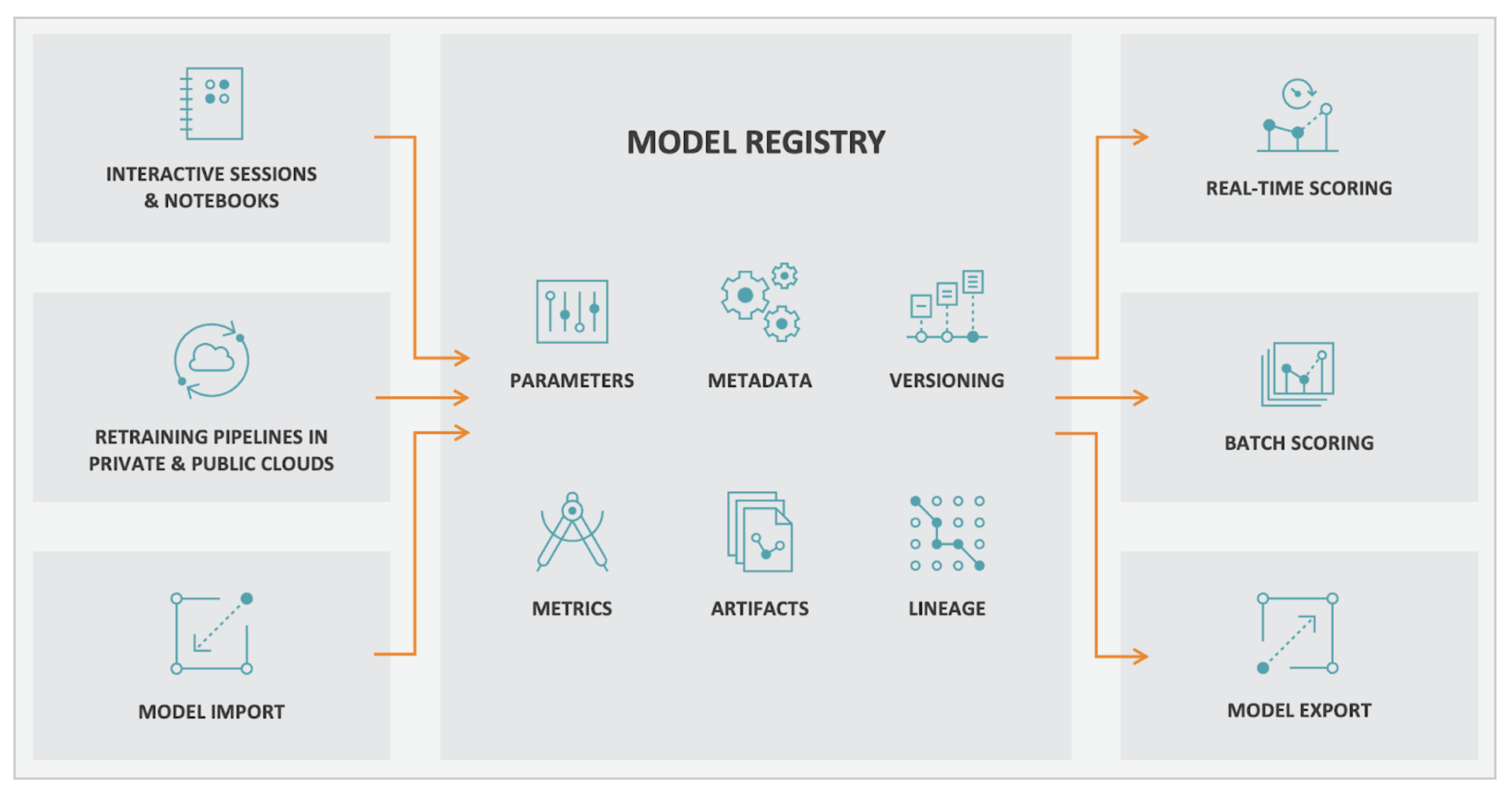In the dynamic world of machine learning operations (MLOps), staying ahead of the curve is essential. That’s why we’re excited to announce the Cloudera Model Registry as generally available, a game-changer that’s set to transform the way you manage your machine learning models in production environments.
Unlocking the power of model management
Machine learning has rapidly transformed the way businesses operate, but it has also introduced the need for robust model management. That’s where the Model Registry steps in. Think of it as your digital vault for machine learning models, a central hub that stores, organizes, and tracks every facet of your models and their life cycle. By providing a unified platform, it simplifies the complex task of model management across the entire life cycle of your machine learning projects.
What does the Model Registry offer?

The Model Registry is designed to streamline these processes, offering a variety of tools and features.
Easy to use SDK: You can use the familiar MLFlow library that offers an intuitive, easy-to-use solution for model tracking. It simplifies recording model parameters, metadata, and metrics ensuring transparent bookkeeping. You can use the SDK to register your models in the Model Registry, enabling efficient management and deployment within your MLOps workflows.
Version Control: The Model Registry empowers you to store and manage multiple versions of your machine learning models. You can track each iteration, compare changes, and ensure that you always have access to the version that suits your needs. Model Registry eliminates versioning chaos and allows for a more systematic approach to model iteration.
Artifacts Management: The system efficiently handles the import and export of model artifacts in standard formats, promoting compatibility with different systems. It focuses on storing model artifacts in the Model Registry, linking development and production environments. This approach aids in straightforward model management and smooth transition across various stages of the project life cycle.
Lineage Tracking: It’s essential to maintain traceability in MLOps. The Model Registry records who made changes to a model, when these changes were made, and what the changes entailed. This creates a transparent and accountable record of a model’s evolution, which is important for effective model management and meeting regulatory requirements.
Robust APIs: The Model Registry’s APIs facilitate integration with CI/CD pipelines and essential tools in MLOps. They are designed to complement existing workflows, helping to streamline the transition of models from development to production. This integration supports the efficient operation of machine learning projects in a rapidly evolving landscape.
The future of MLOps
The evolving landscape of MLOps is increasingly embracing hybrid and multi-cloud systems, offering significant flexibility for machine learning operations. This approach allows organizations to train their machine learning models in a private cloud environment and then deploy them to a public cloud, or vice versa. The adaptability of this method caters to various needs and scenarios, providing optimal environments for both the development and deployment phases. A key component in facilitating this flexible, cross-environment approach is the Model Registry. Its development is geared towards easing the transition between different cloud systems. This functionality is a prominent part of our road map, aiming to streamline the process of managing and deploying models across diverse cloud platforms, thereby enhancing the efficiency and scalability of machine learning workflows.
Get started today
The Model Registry is now officially accessible in CML Public Cloud, ready to support both experienced data scientists and newcomers in machine learning. To harness the full potential of General Availability (GA), upgrade your CML Workspaces and deploy your new Model Registry! We encourage you to explore its features and see how it can assist in your machine learning projects. You can find more information about the new Model Registry in our community articles: How to set-up Model Registry and How to use Model Registry.




